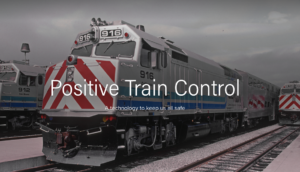American rail systems are essentially safe.
According to the Federal Railroad Administration, there has been a 14 percent decrease in the number of train accidents in the country between 2014 and November 2017.
Nevertheless, between collisions, derailments, human factors, and track, equipment, and signal causes, among others, we saw 1,492 train accidents in 2017 alone. Could we do better? How can we reduce the number of train accidents even further?
Lately, there’s been a lot of talk in the news about Positive Train Control (PTC). The main goal of any train protection system is to stop a running train. A PTC restricts the train movement to an explicit allowance, and movement is halted upon invalidation.
But how does PTC actually work? It’s a system that enhances train operation by combining locomotive, wayside, and signaling via wireless communication to reduce the possibility of:
- train-to-train collisions
- overspeed derailments
- unauthorized incursions into established work zone limits
- movement of a train through a track switch in the wrong position
Click this link to find out more.
